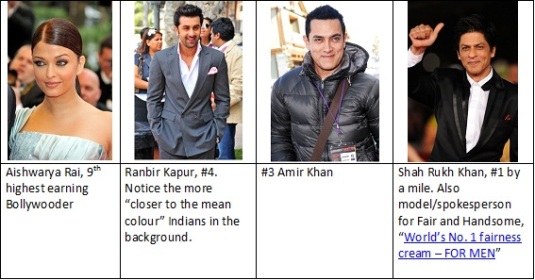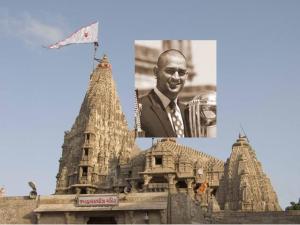I am a little worried that kabcity has wandered far away from meaningful debate and deep into the land of fluff. But that’s ok, because as one of my favourite people just told me, “fluffy is still a substance”. So now that my worry has been put to rest, here’s a post I’ve been meaning to write for a while.
I have loved growing up in so many different places, and one of the things I’ve loved most about this is being exposed to different ways of speaking the same language. People have mocked me for how I speak English (thanks especially to Matt and Anne for this), which only served to increase my appreciation for the diverse linguistic styles of peoples. So here is a list of things people say that I find interesting, inspiring, hilarious, etc.
Part one: Ode to Tomzanian
My dear friend/colleague/mentor/co-worker/roommate/brother/uncle/father/lover Tomzanian, who’s a Korean by citizenship but as confused as me in practice, came up with this brilliant expression: “I need some advices”. Advices, as it turns out, is a real word. And really, why ask for one piece of advice when you can have many advices? Tommy also used to declare “I will make amends!” after he screwed up. Genius. I miss that guy. Also, I’m really sorry that I told you “women” is pronounced “why-men”. That was mean.
Part two: where to do urine
A few months ago, I was working in Chhatisgarh with a group of recent college graduates. The training centre we were at had a bathroom for women, but no such amenity was available for those of us with a Y chromosome. By lunchtime, I really needed to go. We ate at a nearby dhaba (which had no bathrooms for anyone) and on the way back I started looking around intently for an appropriate spot for bladder relieving. When I was about to give up hope, one of the guys I was working with walked up and asked, very politely, “Sir – kya aap urine karenge?” (“Sir – would you like to do urine?”). I was thrilled. “Yes, I would very much like to do urine”. He took me, via a random alley, to a large field where we both did urine. I don’t know if this is true for other languages, but colloquial Hindi includes a lot of English words. Until that day, however, I did not realize “urine” was part of the Hinglish vocabulary. Live and learn, as they say.
Part three: Dog owners, please clean up dog shit
For whatever reason, “shit” isn’t considered to be a vulgar word in Indian English. People who’ve recently come to India find this strange, but it’s amazing how quickly one gets used to hearing “shit” from all sorts of people, including little kids and grandmas. A few months ago, signs popped up all over my neighbourhood urging dog owners to “Please Clean up Dog Shit”. It wasn’t until two friends from Washington were visiting me that I realized how bizarre this would be in the US. Nothing more than a case of 1wp.
part four: Taking Rest, Getting Fresh, and an attempt at crawling beyond fluff
Jagat, who made a cameo in the first ever kabcity post, is one of my favourite colleagues. I have a huge amount of respect for him, and I cannot put into words how much I’ve learned from him. He speaks, in order of mastery from most to least, Oriya, Sanskrit, Hindi, Bangla, and English. We get along really well, and our relationship is more friendly than it is professional. So when I arrived in Bhubaneshwar after a stupidly early morning flight, I was a bit confused when, after the usual greetings, he asked me “Kabs – do you want to get fresh or start working straight away?”. To “get fresh”, as it turns out, means taking a shower/generally “freshening up”. I love it. Every time I get the opportunity, I use it. “Hey Jagat – let’s get fresh and then go to dinner”…”Hey Jagat – did you get fresh? Yes? Ok let’s go eat”.
A new favourite is “taking rest”. I told my boss yesterday that I was unwell and wouldn’t be able to travel today. He advised me to “take rest and see a doctor”. One can also take tea, take lunch, take water (eg “I don’t take cold water. Please bring me normal water”) etc. And of course there’s “having sleep”. “I called you but you didn’t answer!” “Yes boss – I was having sleep”. “Oh ok. No problem”.
My guess is that a lot of the interesting sentence construction in Indian English can be explained by the structure of Hindi and other Indian languages. Father once gave me a very convincing and nuanced explanation of why we use the word “only” in very funny ways, but unfortunately I can’t remember any of his argument right now! But sleeping, for instance, isn’t something one does in Hindi. “Mujhe neend nahi aa rahi”, which means “I am not sleepy”, is literally translated as “sleep is not coming to me”. So sleep is more like a condition, and hence one “has” sleep. Similarly, even though one could say “Meing bhooka hoon” for “I am hungry”, a much more common phrase is “mujhe bhook lag rahi hai”, which literally translates to “I am feeling hunger”. I have often wondered if this way of constructing sentences, in which the subject is more passive than in American English, is a cause or consequence of the generally higher level of laziness (I think it’s neither – just coincidence). But language does, to an extent, affect how we think. And now that my blogging toes have touched the water of substance, it’s time to take rest. Goodnight.












